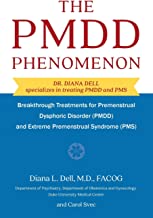Premenstrual dysphoric disorder
A severe, sometimes disabling extension of premenstrual syndrome.
Premenstrual dysphoric disorder (PMDD) is a severe form of premenstrual syndrome that includes physical and behavioral symptoms that usually resolve with the onset of menstruation.
PMDD causes extreme mood shifts that can disrupt work and damage relationships. Symptoms include extreme sadness, hopelessness, irritability, or anger, plus common premenstrual syndrome symptoms such as breast tenderness and bloating.
Drugs and lifestyle changes may help.
Cluster Number:
Wiki Number: PW175
Diagnosis: Premenstrual Dypshoric Disorder
US Patients:
World Patients: 1.8-5.8% of menstruating women.
Sex Ratio:
Age Onset:
Brain Area: serotonin receptors in the hippocampus and prefrontal cortex are affected by estrogen and progesterone activities
Symptoms: pain and mood changes for up to two weeks before menstruation.
Progression:
Causes: genetic and fluctuating hormones during the menstrual cycle;
Medications: antidepressants, SSRIs, ovulation suppression with birth-control pills and GnRH analogues. SSRIs are most common & help 50%.
Therapies: CBT
Youtube Video:
What It’s Like To Have Premenstrual Dysphoric Disorder
Amazon or Library Book: The PMDD Phenomenon
Click the book to link or order from Amazon.

